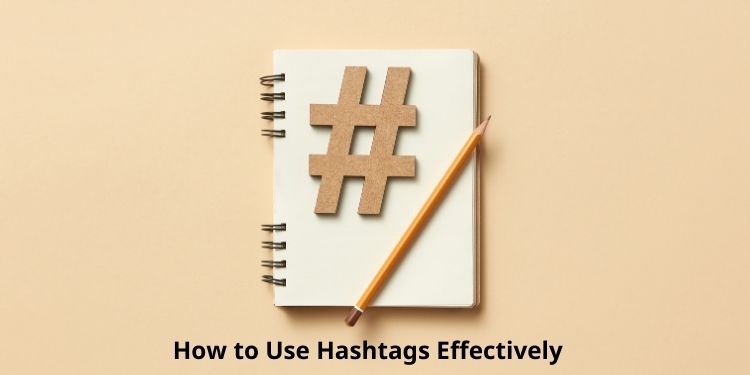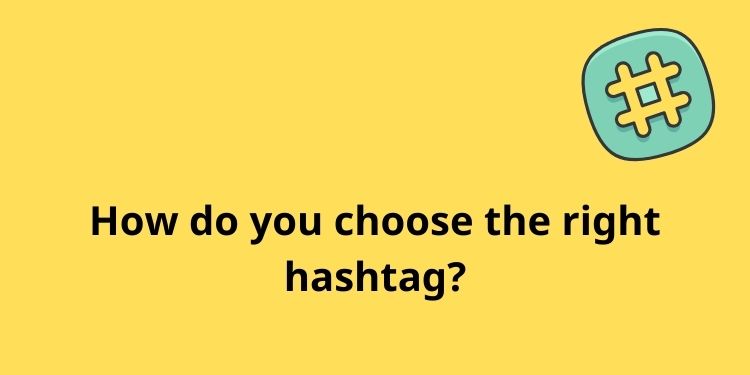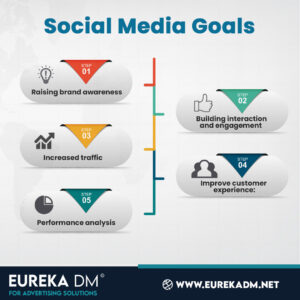Hashtags: In the vast realm of social media, where information flows ceaselessly, hashtags have emerged as indispensable navigational aids, revolutionizing the way we discover, share, and engage with content. A hashtag, denoted by the symbol ‘#’ preceding a word or phrase, serves as a virtual key to unlock conversations, trends, and communities across various online platforms. Originating on Twitter, hashtags have transcended their initial purpose of categorization to become dynamic tools shaping digital dialogues and influencing online dynamics. This introduction explores the evolution, significance, and multifaceted applications of hashtags in our interconnected digital world.
Hashtags, their importance and how to use them
In the dynamic landscape of social media, hashtags have become pivotal in shaping the way we interact with online content. These seemingly simple combinations of words or phrases, prefixed by the ‘#’ symbol, carry significant importance and offer a plethora of benefits when used strategically. Let’s delve into the essence of hashtags and explore how to harness their power effectively.
“read about Google Search Console (GSC)”
Enhancing Discoverability:
Hashtags serve as digital signposts, guiding users to content aligned with their interests. By clicking on or searching for a specific hashtag, individuals can effortlessly explore a wealth of posts and discussions related to a particular theme or topic.
“read more about Advertising campaign management”
Fostering Engagement and Community:
A well-chosen hashtag can be instrumental in building communities around shared interests. Whether it’s a hobby, cause, or event, hashtags provide a common ground for users to connect, share, and engage in conversations.
“read more about E-commerce Stores”
Amplifying Visibility for Brands:
Businesses capitalize on hashtags to boost visibility and engage with their target audience. A carefully crafted, branded hashtag associated with a marketing campaign can create a cohesive narrative, encourage user participation, and extend the reach of the campaign.
Tracking and Analytics
Hashtags facilitate the tracking of user-generated content, enabling businesses and individuals to measure the effectiveness of their campaigns. Monitoring the usage and reach of specific hashtags provides valuable insights into audience behavior and the success of online initiatives.
“read more about Motion Graphics“
Harnessing Trending Topics
Keeping an eye on trending hashtags allows users to stay informed about current events, popular culture, and emerging trends. For content creators and marketers, leveraging these trends can be a strategic way to align their content with ongoing conversations and maximize visibility.
How to Use Hashtags Effectively

- Ensure relevance: Choose hashtags that directly relate to your content.
Mix popular and niche hashtags: Balance broad visibility with targeted engagement. - Create branded hashtags: Establish a unique online identity for your brand or campaign.
- Research and stay current: Identify trending hashtags within your industry for timely engagement.
In conclusion, hashtags are not merely symbols; they are dynamic tools that shape the digital landscape. Understanding their significance and employing them strategically can elevate your online presence, foster community engagement, and ensure that your content resonates in the vast and ever-evolving realm of social media.
“read more about Social media page management“
How to use hashtags

Using hashtags effectively involves strategic considerations to maximize your content’s visibility and engagement on social media platforms. Here are some key practices:
Relevance is Key:
- Ensure that the hashtags you use are directly related to the content of your post. This relevance helps your content reach the right audience and makes your use of hashtags more authentic.
- Mix Popular and Niche Hashtags: Combine popular, widely-used hashtags with more niche, specific ones. Popular hashtags increase the visibility of your content to a broader audience, while niche hashtags help you connect with a more targeted and engaged community.
- Create Branded Hashtags: For businesses, events, or campaigns, consider creating a unique and branded hashtag. This not only helps in organizing user-generated content but also establishes a distinct online identity for your brand or initiative.
- Research Trending Hashtags: Stay informed about trending hashtags within your industry or community. Incorporating these into your posts can boost visibility by tapping into ongoing conversations and capitalizing on the latest trends.
- Use Platform-Specific Strategies: Different social media platforms may have distinct hashtag practices. On Instagram, for example, users often employ longer and more descriptive hashtags, while Twitter users may opt for shorter, more concise ones. Understand the platform’s culture and adapt your hashtag strategy accordingly.
- Limit the Number of Hashtags: While there’s no strict rule, it’s generally advisable not to overload your posts with hashtags. Overuse can make your content appear spammy and dilute its impact. Aim for a balance, using a mix of carefully chosen hashtags.
- Encourage User Participation: When running campaigns or contests, encourage your audience to use a specific hashtag. This not only consolidates user-generated content but also creates a sense of community around your brand or cause.
- Monitor and Analyze: Regularly track the performance of your hashtags. Monitor engagement, reach, and the overall impact on your audience. Platforms often provide analytics tools to help you assess the effectiveness of your hashtag strategy.
By incorporating these practices into your social media approach, you can harness the full potential of hashtags, expanding the reach of your content and actively participating in the dynamic conversations that define the online world.
What are the types of hashtags?
Hashtags come in various types, each serving a different purpose on social media platforms:
- Branded Hashtags: Unique to a specific brand, product, or campaign. Examples include #JustDoIt for Nike or #ShareACoke for Coca-Cola. These help in creating a distinct online identity.
- Campaign Hashtags: Created for specific marketing or promotional campaigns. Users are encouraged to use these hashtags when sharing related content. For example, #BlackFridayDeals or #SummerSale.
- Trending Hashtags: Reflect current events, popular culture, or ongoing trends. Users can tap into these to join broader conversations and increase the visibility of their content.
- Event Hashtags: Designed for conferences, festivals, weddings, or any specific event. Attendees and organizers use these to share updates and connect with others involved. For instance, #SXSW or #WeddingDay.
- Location-Based Hashtags: Geographically specific, these hashtags help users discover content related to a particular location. Examples include #NYC for New York City or #TravelCalifornia for travel-related posts in California.
- Industry-Specific Hashtags: Tailored to a particular industry or niche. Users within that field can use these to connect with like-minded individuals. For example, #TechNews or #FashionBlogger
- Daily/Weekly Hashtags: Recur regularly and often revolve around specific themes on certain days of the week. Examples include #ThrowbackThursday or #MotivationMonday.
- Acronym Hashtags: Comprised of initials or abbreviations. These are often used for brevity or as a shorthand way to convey a message. Examples include #DIY (Do It Yourself) or #TGIF (Thank God It’s Friday).
- Emotive Hashtags: Conveying feelings or emotions, these hashtags are often used to express personal sentiments. Examples include #Blessed or #Gratitude.
- Call-to-Action Hashtags: Encourage users to take a specific action. This can include participating in a challenge, sharing experiences, or answering a question. For instance, #PhotoChallenge or #ShareYourStory.
Understanding the different types of hashtags allows users to employ a diverse and effective strategy in their social media endeavors, catering to specific goals and engaging with a variety of audiences.
“read more about The difference between ads and boosted posts on Facebook
How do you invest hashtags in your marketing campaign?

Integrating hashtags into your marketing campaign can significantly enhance its reach, engagement, and overall effectiveness. Here’s a guide on how to strategically invest in hashtags for your marketing efforts:
- Define Your Goals: Clearly outline the objectives of your marketing campaign. Whether it’s increasing brand awareness, promoting a new product, or encouraging user participation, understanding your goals will shape your hashtag strategy.
- Research Relevant Hashtags: Conduct thorough research to identify popular and niche hashtags relevant to your industry, brand, or campaign. Tools like hashtag analytics platforms or native analytics on social media platforms can assist in this process.
- Create Branded and Campaign-Specific Hashtags: Develop a unique, branded hashtag for your campaign. This should be memorable, easy to spell, and directly related to your brand or campaign. Additionally, consider campaign-specific hashtags to highlight different aspects or phases of your marketing initiative.
- Incorporate Trending Hashtags: Stay abreast of trending hashtags within your industry or the broader online community. Integrating these into your campaign can tap into existing conversations and increase the visibility of your content.
- Encourage User Participation: Prompt your audience to use your branded or campaign-specific hashtags when sharing content related to your campaign. This not only consolidates user-generated content but also creates a sense of community and engagement around your brand.
- Cross-Promote Across Platforms: If your campaign spans multiple social media platforms, ensure consistency in your hashtag usage. Cross-promote your campaign and encourage users to participate across different platforms using the designated hashtags.
- Utilize Hashtags in Content: Integrate hashtags naturally into your content. Whether it’s in captions, tweets, or promotional materials, ensure that the hashtags seamlessly complement the overall message and encourage user interaction.
- Monitor and Analyze Performance: Regularly track the performance of your campaign hashtags. Use analytics tools to measure engagement, reach, and overall impact. Adjust your strategy based on the insights gained to optimize future campaigns.
- Engage with Your Audience: Actively engage with users who use your campaign hashtags. Respond to comments, like and share user-generated content, and foster a sense of community around your brand. This interaction enhances the authenticity of your campaign.
- Adapt and Iterate: Marketing campaigns evolve, and so should your hashtag strategy. Be willing to adapt based on the changing landscape, user behavior, and emerging trends. Continuous improvement is key to sustained success.
By thoughtfully integrating hashtags into your marketing campaign, you leverage a powerful tool to connect with your audience, increase brand visibility, and foster engagement. Strategic hashtag usage can elevate your campaign from a promotional effort to a dynamic and interactive online experience.
How do you choose the right hashtag?

Selecting the right hashtags is crucial for maximizing the effectiveness of your social media posts. Here are some guidelines to help you choose the right hashtags:
- Relevance to Content: Choose hashtags that directly relate to the content of your post. The more relevant your hashtags are, the more likely your content is to reach the intended audience.
- Know Your Audience: Consider the interests and behaviors of your target audience. What hashtags are they likely to follow or search for? Tailoring your choices to your audience increases the likelihood of engagement.
- Mix Popular and Niche Hashtags: Balance your use of popular, widely-used hashtags with more niche, specific ones. Popular hashtags increase visibility, while niche hashtags help you reach a more targeted and engaged audience.
- Research Trending Hashtags: Stay informed about trending hashtags within your industry or community. Including these in your posts can give your content a timely boost and tap into ongoing conversations.
- Create Branded Hashtags: If applicable, develop a unique and branded hashtag for your brand or campaign. Ensure it’s memorable, easy to spell, and reflective of your brand identity. Branded hashtags help consolidate your online presence.
- Check Hashtag Popularity: Use tools or features on social media platforms to check the popularity of a hashtag. Balance between popular hashtags (which have a broader reach) and less popular ones (which can lead to more targeted engagement).
- Consider Community Hashtags: Identify and use hashtags that are commonly used within your community or industry. These can help you connect with like-minded individuals and participate in relevant conversations.
- Be Specific and Descriptive: Use specific and descriptive hashtags that convey the essence of your content. This helps potential followers understand the context of your post and encourages engagement from those genuinely interested.
- Location-Based Hashtags: If your content is location-specific, consider incorporating location-based hashtags to reach users interested in that geographical area. This is especially useful for local businesses or events.
- Monitor Competitors: Keep an eye on the hashtags your competitors are using. While not copying them outright, this can give you insights into effective hashtags within your industry.
- Test and Iterate: Don’t be afraid to experiment with different sets of hashtags and monitor their performance. Analyze which combinations lead to higher engagement and adjust your strategy accordingly.
Choosing the right hashtags involves a combination of understanding your audience, staying current with trends, and maintaining relevance to your content. By investing time and thought into your hashtag strategy, you can enhance the visibility and impact of your social media posts.


